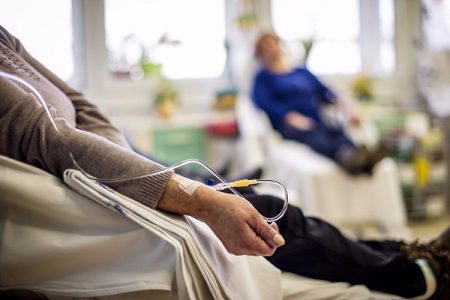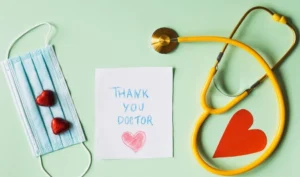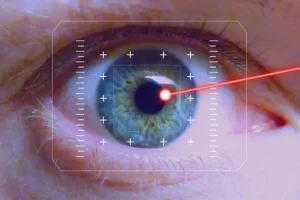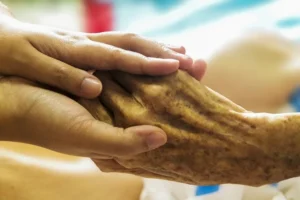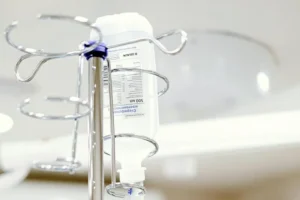How Does Leukemia Affect Your Skin?
- Updated on: Jun 10, 2024
- 4 min Read
- Published on Feb 29, 2020
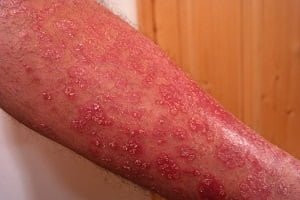
Leukemia is a cancer of blood cells or blood forming tissues like bone marrow. There are different types of blood cells like red blood cells (RBCs), white blood cell (WBCs) and platelets. Leukemia typically refers to the cancer of WBCs. WBCs are involved in the immune system and protects the body from invasion of bacteria, virus, fungi and other foreign substances. In leukemia patients, WBCs doesn’t functions like normal WBCs. All those abnormal WBCs evade the healthy WBCs. Leukemia symptoms may include recurrent fever, fatigue, abnormal bruising, headaches, excessive bleeding, weight loss and frequent infections.
How Does Leukemia Affect the Skin of a Patient?
Leukemia patients are more prone to skin problems like skin rashes (leukemia rash), itching on the skin, leukemia bruises, pale skin and tiny red spots on the skin.
Leukemia Rashes and Itching on Skin
Leukemia patients may find tiny red or purple spots (lumps) on the skin, which are caused by the ruptured blood vessels, capillaries under the skin. Rashes are most commonly seen in leukemia cases. Sometimes, these rashes can be a side effect of chemotherapy and anti-cancer medications also.
Acute myeloid leukemia (AML) is also a leukemia form that affects children. Gums are generally affected due to AML, causing them to swell up and bleeding. It also leads to dark-colored spots on the skin. Leukemia cutis is most commonly found in AML. Infiltration of neoplastic leukocytes and their precursors in the epidermis, dermis results in cutaneous lesions (leukemia cutis).
Patients of leukemia suffer from itchiness on the skin also. Although the exact reason for itching has not been identified but researchers believe that it may be caused due to cytokines production into the body.
When macrophages or other immune cells come in contact with the leukemia cells, they release certain cytokines in the system, causing irritation to the nerve endings and then persistent itching occurs.
Leukemia Bruises
When leukemia progresses, the multiplication of abnormal blood cells disrupts the platelets production. As a consequence of this, there may not be enough platelets to block the burst capillaries and blood could be leaked into the skin. This leakage can cause the appearance of petechiae (tiny red, brown or purple spots) on the skin, which are called as bruises.
Skin infections
As leukemia inhibits the production of normal white blood cells, which fight against the infection, the body becomes more prone to skin infections.
Folliculitis is one of the common infections which is caused due to bacteria or fungi. Inflammation of hair follicles occurs during folliculitis. Fungal infection may appear as a pink, white or red patch on the skin. It is generally seen in neck, back, arms and groin areas.
Pale Skin
Leukemia patients can develop anemia also. Abnormally low red blood cells (RBCs) production is found in anemia, which can cause the appearance of pale skin.
Anemia can cause difficulty in breathing, chest pain, headache, and abnormal blood pressure.
When leukemia breaks the skin, it can also result in malignant wounds. These wounds are very painful and itchy and also produces very bad odor.
How Can Skin Problems Due to Leukemia be Treated?
Leukemia patients should consult a doctor if they find any sores, wounds, rashes or any other skin problem in the skin.
In most of the cases, itchiness, pain and discomfort are the first signs of the skin related problems. There are some ways by which these skin problems can be treated:
- Rashes can be managed depending on their severity.
For moderate rashes, doctors can prescribe corticosteroids given as a cream. Doctors can also suggest antibiotic creams and antibiotic drugs to manage these rashes.
For more severe rashes, the doctor may also suggest chemotherapy for a short time and restart at a lower dose.
- Dry and itchy skin is very common with chemotherapy and radiation therapy.
Antihistamines are preferred for itching. For dry skin, some moisturizers containing salicylic acid, urea and ammonium or lactic acid are generally asked by doctors to apply. Creams with menthol, camphor are also suggested by the doctors.
- Malignant wounds in the skin produces strong odor, which can be treated with metronidazole.
FAQs
What Causes Bruises to Appear Without Injury?
Microscopic tears in blood vessels under the skin lead to bruises. Bruises which appear easily for no reason indicates a bleeding disorder, especially if bruising is accompanied by frequent bleeding gums or nose bleeding. Bruised skin can give rash like appearance.
What does leukemia pain feel like?
Leukemia patients can feel bone pain when there is expansion of bone marrow because of the accumulation of abnormal white blood cells. This may cause sharp pain or a dull pain depending on the area of the body affected. Long bones of arms and legs are the most common locations which experience the pain.
How do leukemia patients die?
Leukemia patients may die from different things such as due to a sudden blood loss or a stroke because of inability of the blood to clot. Low hemoglobin levels may also be a complication in leukemia. Pneumonia can also be a reason of death because patients are at a risk of aspiration.
Can leukemia be cured with bone marrow transplant?
Acute myeloid leukemia (AML) patients can be treated with bone marrow transplant (BMT) or blood stem cell transplant. This process replaces the abnormal blood-forming cells (stem cell) with the healthy or normal ones. Cells from a donor (allogenic transplant) or from a patient’s own body (autologous transplant) may be used for bone marrow transplants.






